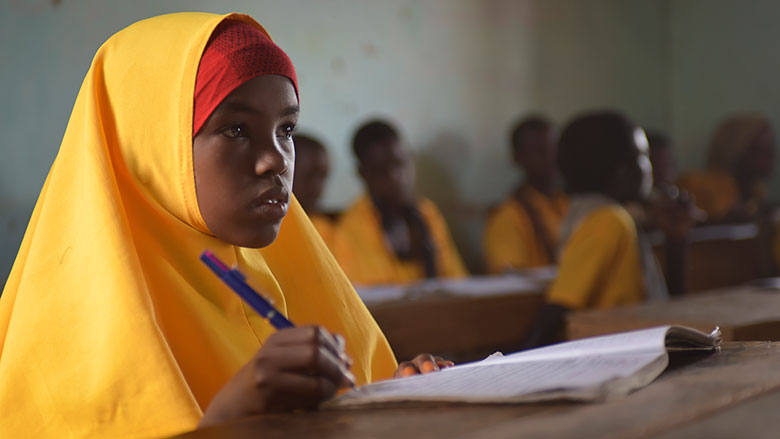WASHINGTON, September 25, 2018 – The World Bank’s first development strategy for Somalia focuses on strengthening basic service delivery and restoring
WASHINGTON, September 25, 2018 – The World Bank’s first development strategy for Somalia focuses on strengthening basic service delivery and restoring economic resilience and opportunities to support the country’s transition out of fragility.
The Country Partnership Framework (CPF) FY2019-2022 outlines—and deepens—the Bank’s engagement with Somalia over a four-year period. It also unlocks new, exceptional International Development Association (IDA) financing through Pre-Arrears Clearance Grants to support projects in finance reform and improving financial management capabilities.
“This is an exceptional opportunity for the country and its citizens,” said Hugh Riddell, World Bank Somalia Country Representative. “The vital partnership between the World Bank and the Somali government presents a unique opportunity to pave the way to stable, more resilient country.”
The CPF builds on Somalia’s recent progress in economic reforms and institution building through the Multi Partner Fund (MPF), the Bank’s main financing vehicle for Somalia since 2013. The MPF has helped to stabilize key institutions and pilot initiatives that have been phased in across the Somali peninsula. Donor finance will continue its support through the MPF to support the new strategy.
Among the CPF objectives, core results areas include:
- Increased quality and more inclusive basic services: increased financing for and proficiency testing of 3,000 school teachers; and increased provision of basic health services in selected Federal Member States by 750 selected, trained and verified female health workers
- Increased fiscal space and equity in the use of public resources: a doubling of federal inland revenue, and increased trust in formal resource sharing and distribution through inter-governmental transfers system
- Increased access to finance and energy: new lending for Small and Medium-sized Enterprises (SMEs), particularly for women and youth; 30% of energy generated from renewable sources; and greater licensing and supervision capacity of the Central Bank, resulting in more secure financial services
- Increased access to water for resilience and productivity, including 250,000 people in rural areas, 56% of whom are women
The CPF also aims to ensure gender equality and equity, the inclusion of marginalized groups, and will seek to address fragility by building resilience across all sectors.
For the first time in more than 30 years, the Somali government will be placed in the center of education and health service delivery. Civil society, the private sector and the development community provided most service public service in the absence of government since 1991.
The government also plans to double inland revenue collection, create jobs for infrastructure development, and expand social protection for its citizens.
“We must work together to rebuild every corner of our country for the benefit of each and every citizen in Somalia,” said Dr. Abdirahman Beileh, Somalia Minister of Finance.
The World Bank Group will also support small and medium-sized enterprises to create jobs in Somalia, increase access to renewable energy, and support over 500,000 people with improved agriculture technology and water sources to build resilience to climatic shocks.
The CPF is the result of extensive consultations with Somali authorities, donors, civil society, private sector, and the public.
END

COMMENTS